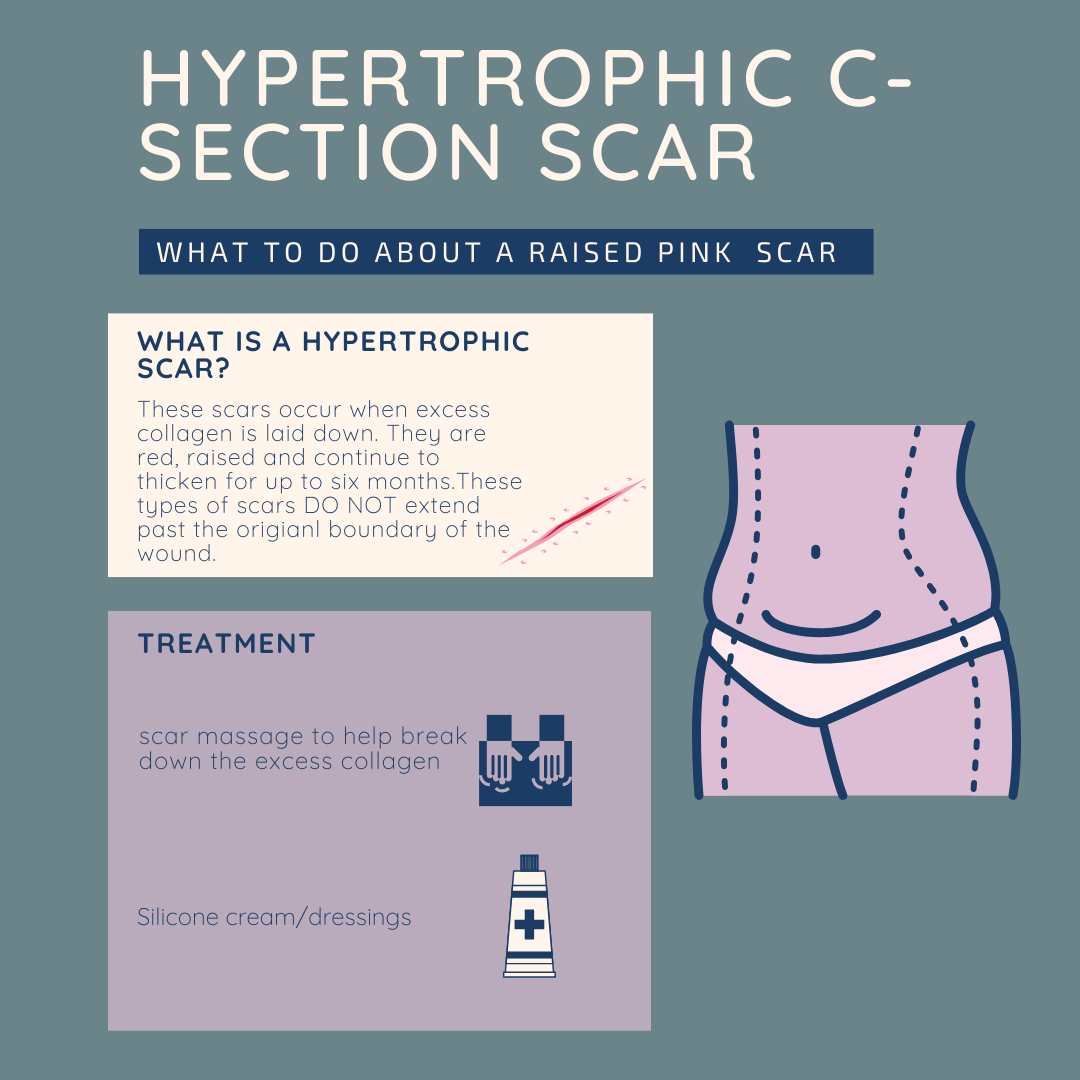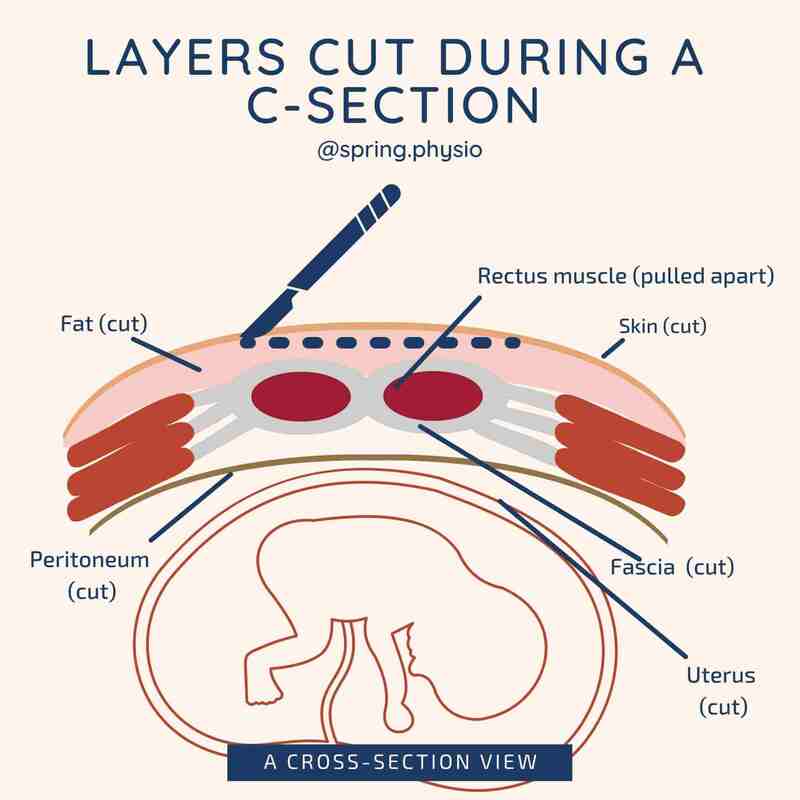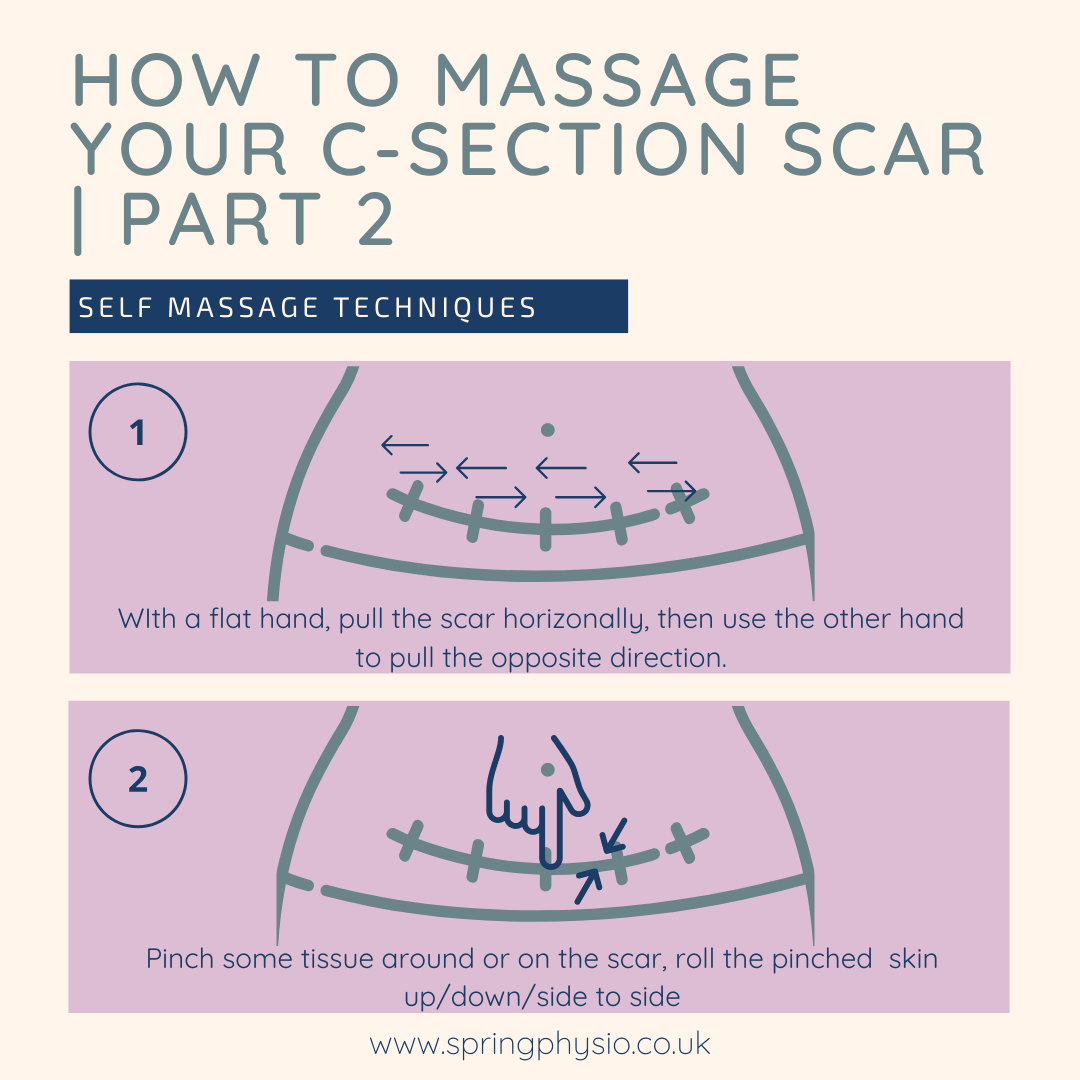|
.Pink and raised scars are pretty common... and people tend not to realise that there is something that can be done about them! Both these treatments can be carried out at home once your physiotherapist has explained how to implement them.
The NICE guidelines recognised silicone as a good treatment option for hypertrophic scars. Dressings are available on prescription on can be purchased online. My favourite silicone option is Kelo-cote scar gel. There are other in clinic interventions such as laser treatment, but massage and silicone is a great place to start.
0 Comments
When you consider the number of structures that are cut during a c-section, it's not that surprising that women can find they have some trouble regaining abdominal & core strength afterwards. Whilst they don't normally cut through the abdominal muscles, the connective tissue around the muscles is cut and so as those structures heal it can cause adhesions. This can affect how well the muscles can glide and contract through the surrounding tissue.
If you are struggling with your abdominal strength post c-section, ask your GP for a physio referral, or alternatively book in to see your local pelvic health physio. We often assume if something hurts we should leave it alone. But that is not always the case, especially when it comes to scars.
Scars are often sensitive because the new regenerated nerves need a bit of re-education. Nerve endings are there to protect us and they do that by sending signals to the brain which then produce pain. Nerves in a scar can sometimes be a bit too enthusiastic and send too many pain signals to the brain. Pressure from clothing, rough fabrics or touch can all be interpreted as a potential threat and the nerves respond with pain. Of course, these types of touch are not dangerous and so we need to educate the nerves to not respond to such things. We can do this through massage and touch. The more we do this the more the nerves learn that these types of touch are normal. Wait at least 6 weeks before starting scar massage. The wound should be completed closed - If you are unsure whether it is healed enough consult your GP or a women's health physio. There is no need to use expensive scar oil; any non fragranced moisturising cream or oil is great. 👍 Your scar may be sensitive to begin with, so start massaging away from the scar and then as you get used to the feeling you can work closer to the scar itself. Your scar tissue is not limited to the scar itself, so it's important to work around the scar on an ongoing basis. Increase the pressure gradually, and spend a couple of minutes on each technique. Here are some final self massage techniques. This is one of my favourites, because it is done with movement. I find it super effective at improving the mobility of the scar. Often clients report an immediate change when I use this technique in clinic. Start on one side of the scar doing a few strokes and then move along the scar, repeating the same technique until you’ve covered the whole scar.
So, you had your C-section, stayed a couple of nights in hospital and got discharged with (if you're lucky) a leaflet about recovery. You walked around hunched over for a few days (or weeks) and eventually started to feel better. Frankly given that you had a newborn to look after, you were just thankful for the fact that you could now lift the baby pain free! With some much going on, you probably didn't give it much further thought during this early recovery period (this was certainly my experience).
A weak core and a non - mobilised scar can lead to an overhang. Women assume nothing can be done to improve this... but there is plenty! However, it does require commitment and perseverance as changes don't happen over night. Scars are still healing and remodelling 18-24 months after surgery so there is lots of time to manipulate change. Even if you are further down the line, it is still worth massaging your scar if you haven’t done it before. Tissues don’t stop responding to mobilisation until a joint is fused! The overhang isn’t only caused by the scar, so a holistic approach to treatment with appropriate core strengthening will yield the best results. Any scar can become hypertrophic. This means that the scar is red and raised. In this case silicone can be a useful treatment to improve the colour and flatten the scar. It is worth asking your Physio or GP to review your scar and see if silicone would beneficial. |
AuthorClaire is a women's health and sports Physiotherapist. She is the owner of Spring Physio and is based in East Sussex. Archives
April 2024
Categories
All
|








 RSS Feed
RSS Feed